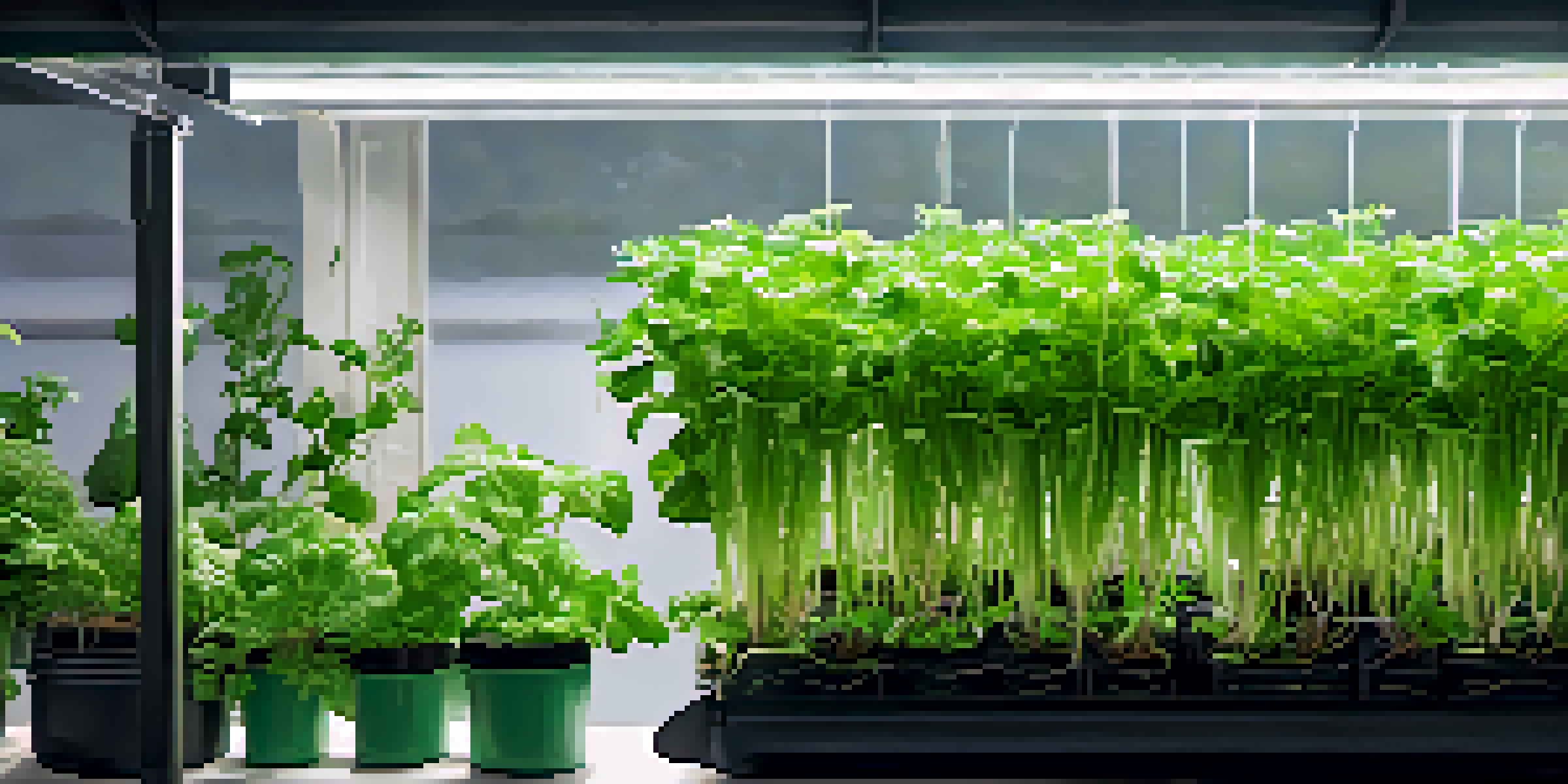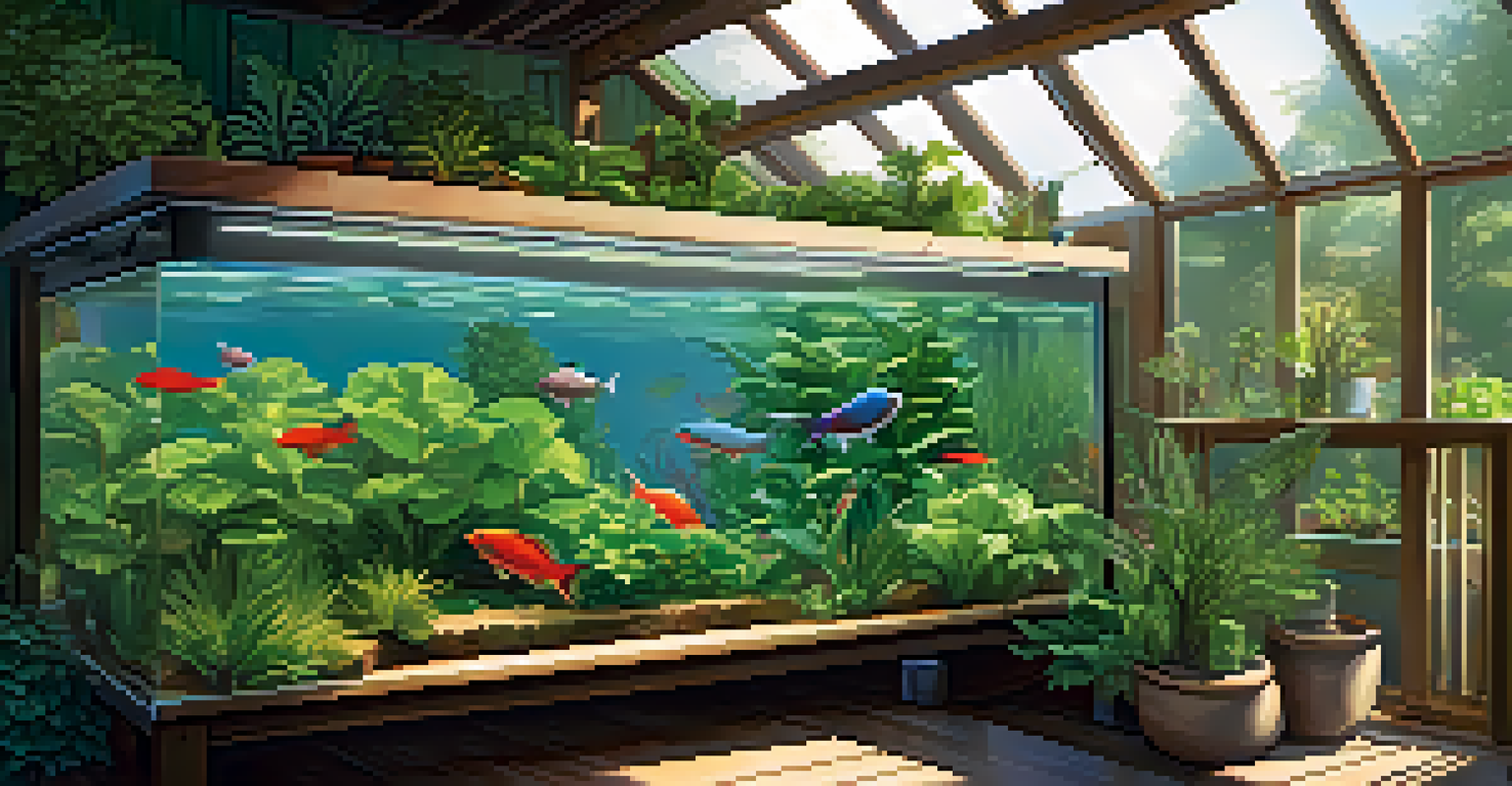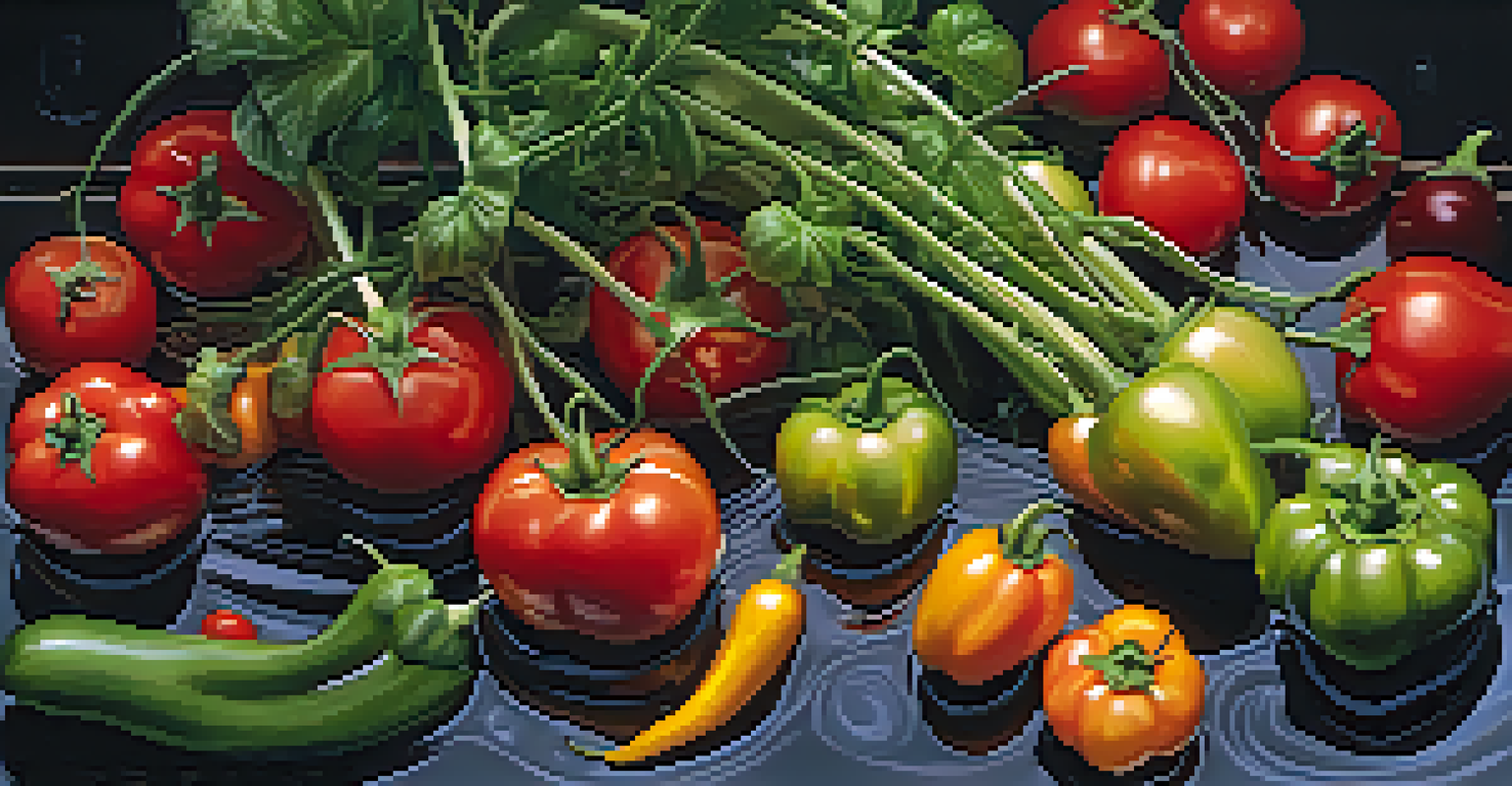Hydroponics vs. Aquaponics: Key Differences and Benefits

Understanding Hydroponics: A Soil-less Growing Method
Hydroponics is a method of growing plants without soil, using nutrient-rich water instead. This technique allows for greater control over growing conditions, leading to faster plant growth and higher yields. By delivering nutrients directly to the plant roots, hydroponics can often produce healthier crops in a shorter amount of time. It's particularly popular for growing leafy greens, herbs, and even strawberries in controlled environments.
The greatest gift of the garden is the restoration of the five senses.
One of the key benefits of hydroponics is its ability to save space. Without the need for soil, plants can be grown vertically, maximizing the use of available area. This makes hydroponics an excellent choice for urban farming, where space may be limited. Additionally, hydroponic systems often use less water than traditional gardening, making them more sustainable in water-scarce regions.
However, hydroponics does require a keen understanding of nutrient management and pH levels. Growers must monitor these factors closely to ensure optimal plant health. While it can be a bit technical at first, many find that the rewards of lush, vibrant plants make the effort worthwhile.
Exploring Aquaponics: A Symbiotic System of Fish and Plants
Aquaponics combines hydroponics with aquaculture, the raising of fish, to create a sustainable and symbiotic ecosystem. In this system, fish waste provides organic nutrients for the plants, while the plants help filter and purify the water for the fish. This closed-loop system not only maximizes resource use but also minimizes waste, making aquaponics an eco-friendly farming method.

The beauty of aquaponics lies in its ability to produce both fish and plants simultaneously. Common fish species used in aquaponics include tilapia and catfish, which thrive in a variety of conditions. This dual production can provide a diversified source of food, making it appealing for both home gardeners and commercial operations. Plus, the interaction between the fish and plants can lead to healthier crops, as they benefit from the natural nutrients provided by the fish.
Hydroponics: Soil-less Plant Growth
Hydroponics allows for efficient plant growth without soil, utilizing nutrient-rich water for faster yields and healthier crops.
However, aquaponics can be more complex to manage compared to hydroponics. Balancing the needs of both fish and plants requires careful monitoring of water quality, temperature, and nutrient levels. For those willing to invest the time and effort, the rewards can be significant, with fresh produce and fish right from your backyard.
Key Differences: Hydroponics vs. Aquaponics
While both hydroponics and aquaponics are innovative growing methods that eliminate soil, they differ significantly in their approach. Hydroponics relies solely on nutrient solutions to feed plants, whereas aquaponics incorporates fish as a vital component of the ecosystem. This fundamental difference leads to various implications for growers in terms of setup, maintenance, and outputs.
In every seed, there is a promise of a flower.
Another notable difference is the type of produce each system typically yields. Hydroponics is commonly used for a wide range of vegetables and herbs, while aquaponics often focuses on leafy greens and vegetables, alongside fish production. This distinction can influence a grower's choice depending on their goals, whether they prioritize plant variety or a more integrated food source.
Lastly, the initial investment and operational complexities can vary between the two systems. Hydroponic systems might require specialized equipment for nutrient delivery, while aquaponics necessitates additional considerations for fish care. Understanding these differences can help aspiring growers choose the right system for their needs.
Benefits of Hydroponics: Efficiency and Control
One of the most significant benefits of hydroponics is its efficiency. By using a soil-less system, growers can maximize their yield per square foot, which is especially beneficial in urban environments. This efficiency translates to quicker growth cycles, often resulting in multiple harvests within a year, compared to traditional farming methods.
Moreover, hydroponics allows for precise control over nutrient delivery, which can lead to healthier plants and better flavors. Growers can adjust nutrient levels based on specific plant requirements, ensuring optimal growth at every stage. This level of control can also help in reducing the impact of pests and diseases, as conditions are often more regulated than in traditional soil-based systems.
Aquaponics: Fish and Plant Synergy
Aquaponics combines fish farming and plant cultivation in a sustainable ecosystem, using fish waste to nourish plants while they purify the water.
In addition to space and resource efficiency, hydroponics can also be practiced year-round in controlled environments. This means that fresh produce can be grown regardless of external weather conditions, providing a consistent food supply. For those looking to grow their own food or start a commercial venture, these advantages make hydroponics a compelling choice.
Benefits of Aquaponics: Sustainability and Biodiversity
Aquaponics stands out for its sustainability, as it creates a closed-loop system that minimizes waste. The fish provide nutrients for the plants, while the plants help purify the water for the fish, creating a balanced ecosystem. This means that aquaponics systems can use up to 90% less water than traditional farming methods, which is crucial in areas facing water scarcity.
Additionally, aquaponics promotes biodiversity. By incorporating both plants and fish, growers can create a more balanced ecosystem that supports a variety of species. This not only enhances resilience against pests and diseases but also leads to healthier produce and fish. The diversity within the system can create a more robust environment, making it less reliant on chemical inputs.
Moreover, aquaponics offers the unique advantage of producing two sources of food from a single system. This can be particularly appealing for individuals and families looking to diversify their diet. The combination of fresh vegetables and fish can provide a well-rounded, nutritious food source right at home.
Challenges of Hydroponics: Technical Knowledge Required
Despite its many advantages, hydroponics does come with challenges, particularly for beginners. Understanding the intricacies of nutrient management, pH levels, and water quality can be daunting. New growers may face a steep learning curve, as even small imbalances can affect plant health and yield.
Moreover, hydroponic systems can sometimes be more prone to issues like algae growth if not properly managed. This can lead to complications that require additional monitoring and intervention. For those just starting out, it's essential to invest time in learning the fundamentals to avoid common pitfalls.
Key Differences: Hydroponics vs. Aquaponics
While both methods eliminate soil, hydroponics focuses solely on plants, whereas aquaponics integrates fish, impacting setup and maintenance.
On the bright side, many resources are available today, including online courses and community forums, which can help newcomers navigate the complexities of hydroponics. With a bit of research and practice, many find that the rewards of successful growth far outweigh the initial challenges.
Challenges of Aquaponics: Balancing Two Systems
Aquaponics presents its own unique set of challenges, primarily stemming from the need to balance the requirements of both plants and fish. Finding the right equilibrium can be tricky, as changes in one part of the system can directly affect the other. For instance, overfeeding fish can lead to excess waste, which might overwhelm the plants if not managed properly.
Additionally, aquaponics systems often require more initial setup and investment than hydroponics, due to the need for fish tanks and additional filtration systems. This complexity can be a barrier for some, especially those looking for a straightforward growing method. However, many enthusiasts find that the benefits of aquaponics justify the initial challenges.

Lastly, maintaining water quality is crucial in aquaponics. Regular testing for ammonia, nitrites, and nitrates is necessary to ensure a healthy environment for both fish and plants. While this may seem daunting, many aquaponics operators develop routines and strategies to monitor and maintain their systems effectively, leading to successful outcomes.